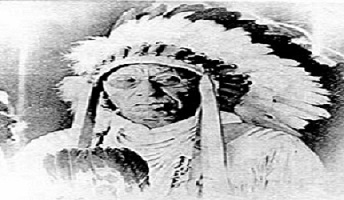Last updated: August 23, 2019
Lesson Plan
The People: Pre-1845

- Grade Level:
- Upper Elementary: Third Grade through Fifth Grade
- Subject:
- Social Studies
- Lesson Duration:
- 90 Minutes
- Common Core Standards:
- 3.SL.1, 4.SL.1, 5.SL.1
- State Standards:
- North Dakota Foreign Language Standards: Communities 4.2; North Dakota Social Studies Standards: SS.2.4.2.6
Essential Question
Who were the people who originally lived in the area now called Knife River Indian Villages NHS?
Objective
1. Students will be able to share at least 3 facts about the Mandan and Hidatsa tribes prior to their move to Like-A-Fishhook Village and Fort Berthoud Reservation.
2. Students will be able to analyze similarities and differences between the Mandan and Hidatsa tribes with their own culture.
Background
This lesson is part of Knife River Indian Villages National Historic Site Teacher's Guide for Grades K-8: Guide to the Earthlodge People. It was written by members of the Mandan Hidatsa Arikara Nation for educators.
This background reading material explores the history of the Three Affiliated Tribes from Pre-1845. It covers the Early Villages, Sacagawea, and other people of historic significance who visited the region and villages for exploration and trade.
Preparation
Read the background information before working with the students. Another recommendation for this lesson is to read Good Bird The Indian, His Story Chapter 1: Birth.
Procedure
Read the background information with the students. Stop at appropriate times and initiate the following discussion questions:
1. In 1804 the Hidatsa still lived at Knife River. Compare visiting a Hidatsa village in 1804 with going to a mall today. If you lived in 1804, what do you think you would have traded for in the village? What might you have brought to the village to trade?
2. Compare the life of the Hidatsa and the life of the Europeans in the 1804 time period. Use a timeline.
3. How was oral history used to teach Mandan, Hidatsa, and Arikara children? Explain other methods by which children and others were educated. What comparisons can you make with today's educational methods?
4. To what organization in your town might you compare the Black Mouth Society?
If time allows, continue to the next lesson plan that shares a trading activity.
Assessment Materials
Informal Assessment:
Teacher will listen for the discussion answers and clarify any information that is misunderstood.
Enrichment Activities
1. Ask the students to share a story of their own life history. They can't write it down. In the story, be sure to tell where and when it occurred.
2. Ask the students to listen to a story from their grandparents. Share this story with the class.
3. Compare the contemporary Hidatsa events with those of modern day America. Create a collage.
Contact Information
Email us about this lesson plan
